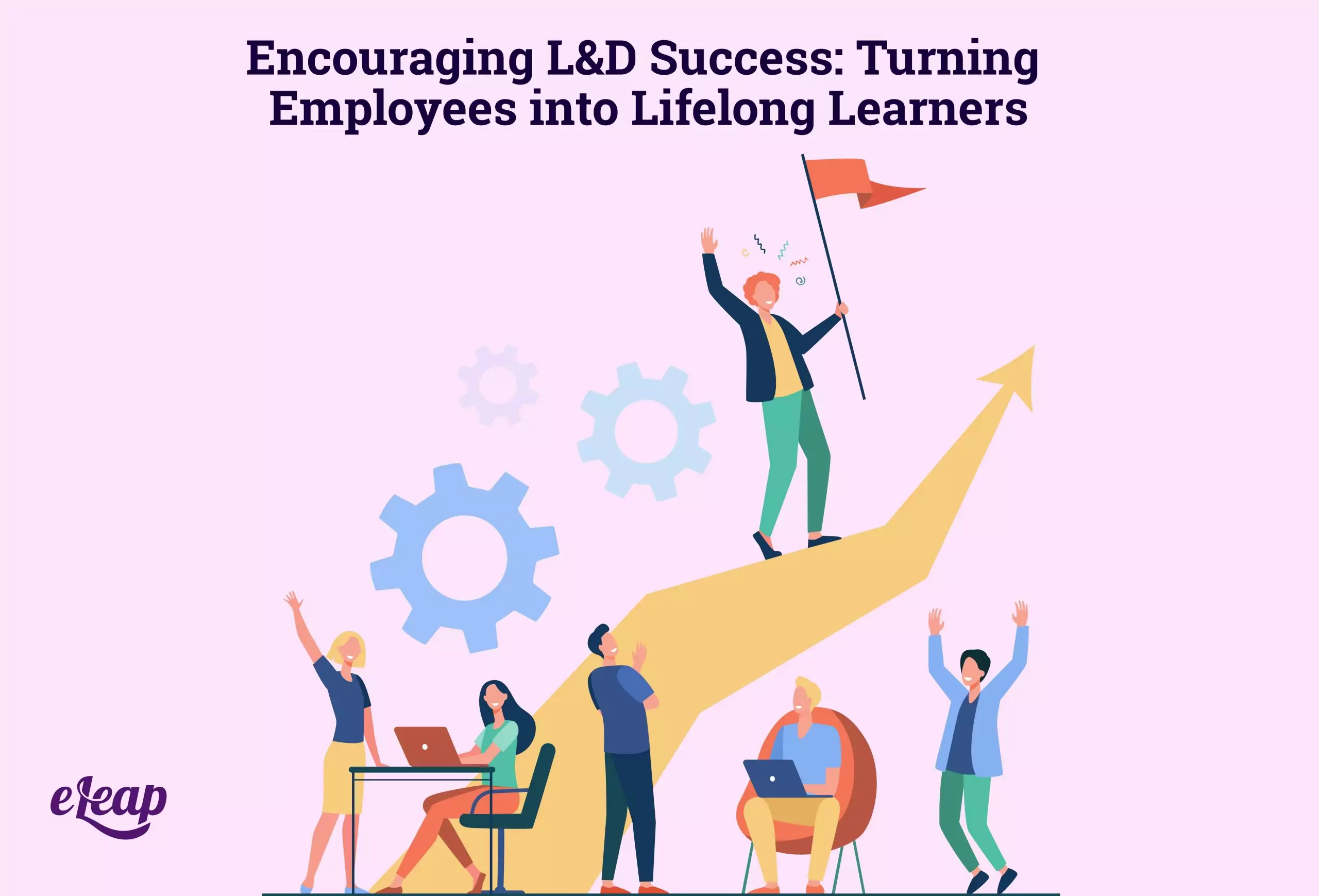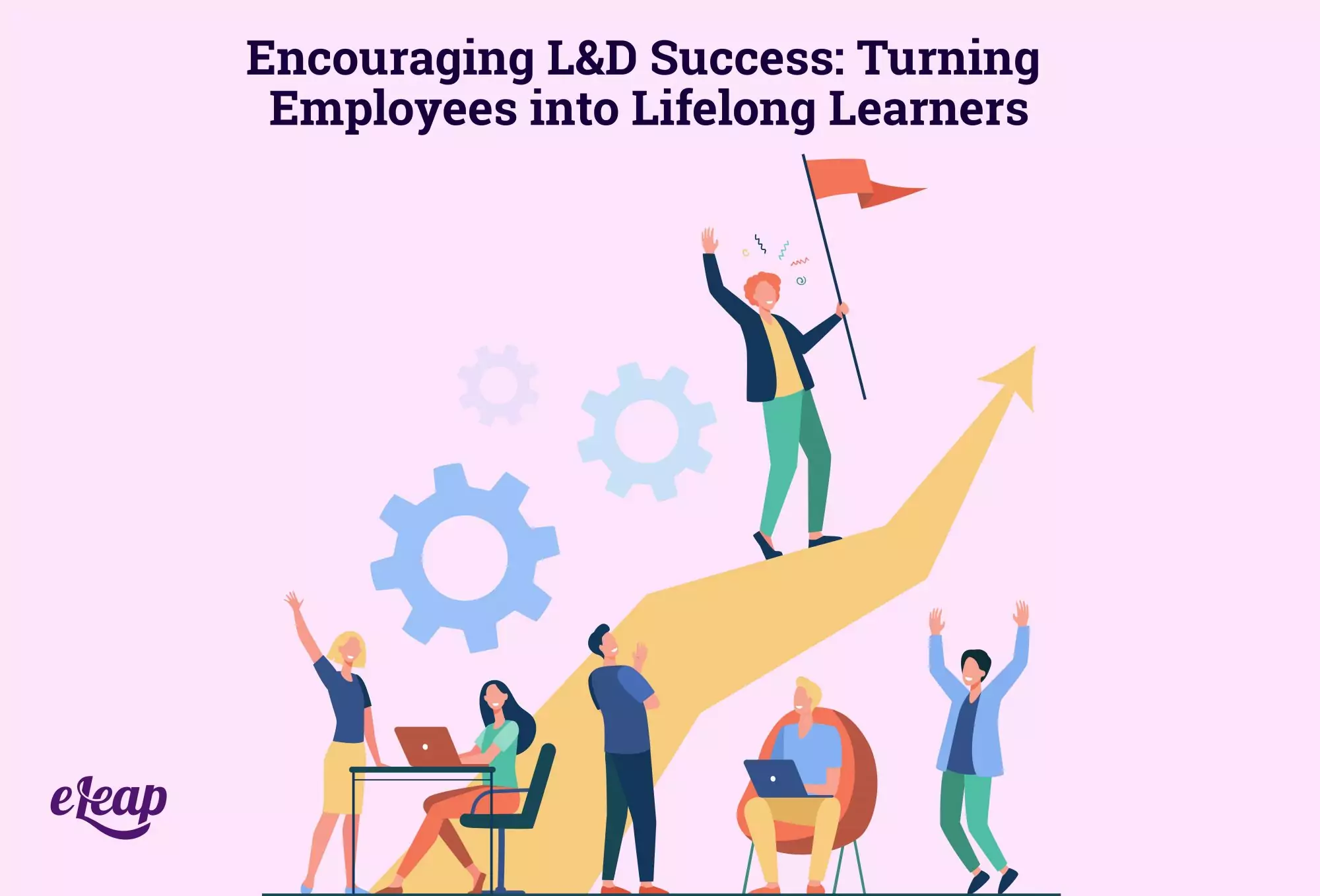Encouraging L&D Success: Turning Employees into Lifelong Learners

Learning and development (L&D) too often takes a backseat to performance management. The truth is that they’re two sides of the same coin. You cannot improve performance without learning and growth, and development does not occur without performance management. Employees who are lifelong learners will inevitably translate their experience and knowledge to productive outcomes for your organization.
This cyclical reality, once understood by managers and leaders, is a blessing. It allows you to create lifelong learners out of your employees. Why does that matter, though? Actually, you’ll discover several reasons why lifelong learning is important for your organization’s success.

Why Lifelong Learners Matter to Businesses
It’s easy to understand why being a lifelong learner could have profound benefits on an individual’s personal life. When you’re driven by curiosity and the desire to know more, every experience takes on new nuances of importance. The most mundane of tasks – having your car’s oil changed, or putting the clothes in the dryer – can become the gateway to new understandings.
How does that transfer to the workplace, though? It comes down to understanding how your employees come to you. While most universities believe they produce employable people, the truth is that they do not. Understand that only 11% of employers believe that college graduates are employable, and only 20% of graduates themselves believe they have the skills required to do their jobs.
What we’re talking about here is the dreaded skills gap. It’s present to some degree in every organization and every industry. If left unaddressed, it can reduce your competitive advantage, drive down productivity, and sap profitability.
Turning employees into lifelong learners helps address that challenge, close the skills gap, and do so without many of the drawbacks found in the traditional corporate learning model. For instance, when forced to train, employees often feel disengaged, bored, and experience a sense of frustration. The information they learn is often not well retained, which means they’re unable to really put new skills or knowledge to work within the business.
However, when you incite curiosity and ignite their passion to learn, employees feel more engaged and connected. They absorb knowledge and retain it, with the ability to put it to work within their day-to-day experience immediately.
So, how do you unlock their potential and turn employees into lifelong learners? It is easier than you might think.
Consider Self-Directed Learning
While employer-directed learning is important and cannot be completely eliminated, there’s a lot of value to be gained by focusing on self-directed learning, too. To clarify between the two, employer-directed learning is any type of learning required by an employer, such as mandatory corporate training, or even professional CE. Self-directed learning, on the other hand, is learning that the employee decides to pursue on their own.
Why should self-directed learning be a big part of your L&D initiatives? It’s one of the best ways to turn employees into lifelong learners and it helps create greater engagement while driving improved knowledge retention. Simply put, when someone chooses to learn about something, they’re far more likely to pay close attention and even enjoy the learning experience.
How do you get started? That’s pretty simple. Ask your employees what they want to learn. Find out where they want to go within their career and then create a path that takes them from where they are now to that point, including all the necessary knowledge along the way.
Put Learning and Performance on Even Footing
Another way to help create lifelong learners is to make learning and development goals as important as performance goals. If you don’t, then they’re going to focus on performance due to time constraints, simply because those are seen as being more valuable or important. Instead, tie learning goals to performance outcomes. They’re interrelated anyway, so use this opportunity to show that interrelationship to your employees.
This goes beyond simply connecting the dots. You need to make learning part of the performance management discussion. Set L&D KPIs and then talk about progress toward learning milestones within your regular check-ins and performance reviews.
However, like performance goals, learning goals need to be clear, direct, and actionable. For instance, rather than saying, ‘improve project management skills”, be direct and set a goal of completing the first level in the project management course in your LMS.
Make Learning Part of Your Regular Conversation
When was the last time you asked an employee what they had learned during a check-in? If yours is like most organizations, it was never. That needs to change if you want to create lifelong learners from your employees.
Make learning part of the ongoing conversation. Normalize it. Make it part and parcel of the culture, the same way great customer service, or a dedication to innovation might be. When you do that, it becomes ingrained in employees’ minds and they will begin actively looking for learning opportunities on their own (which ties back to the tip on self-directed learning).
Give Them Opportunities to Learn While Doing
Theoretical learning is all well and good. It gives your employees the building blocks they need to start developing new skills. However, it cannot replace experiential learning.
Remember the 70/20/10 rule, which says that only 10% of learning occurs through formal activity. 20% happens through developmental relationships, and 70% through challenging experiences and assignments. By giving your employees opportunities to engage in those challenging experiences, you provide them with the best chance of becoming lifelong learners, particularly if you’re able to work social learning in there, too.
Lifelong Learners Value Learning
To grow, develop, and succeed, employees must be curious. They must be driven to learn and know. Mandatory corporate training can only go so far. You need to create a culture that values learning and development as much as it does outstanding performance. The two are inextricably linked, after all. Such a culture will strengthen your organization’s ability to compete, to attract and retain top talent, and accelerate growth for a long time to come.